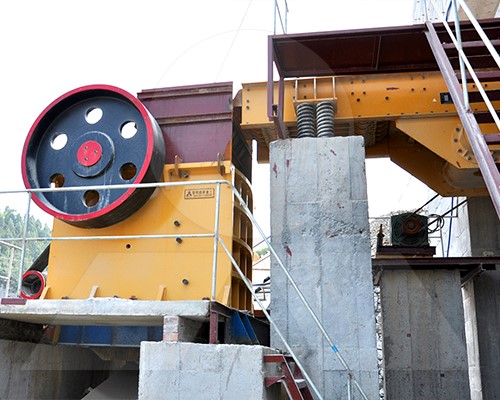Jaw Crusher Optimization for Indonesian High-Moisture Clay-Type Nickel Ore
Jaw crushers are widely used in mining for their robust crushing capabilities. However, when it comes to processing high-moisture clay-type nickel ore in Indonesia, their efficiency can be significantly impacted. Here are some strategies and a process optimization plan to improve jaw crusher performance in this challenging environment.
The Challenges of Crushing Indonesian High-Moisture Nickel Ore
Indonesia is a major producer of nickel, much of which is lateritic ore with a high clay and moisture content. This presents several challenges for jaw crushers:
- Clogging and Sticking: The high clay content causes the ore to be sticky, leading to material build-up in the crushing chamber and on the discharge chute. This clogging reduces the crusher’s effective crushing area and throughput.
- Reduced Throughput: The stickiness and high moisture content can form a “mud-cake” that slows down the crushing process and significantly lowers the machine’s overall productivity.
- Increased Wear and Tear: The abrasive nature of the ore, combined with the sticky material, can lead to uneven wear on the jaw plates and other components, increasing maintenance costs and downtime.
- Difficulty in Sizing: The sticky material makes it difficult for the crushed ore to pass through the screen, leading to poor sizing and a final product that may not meet quality specifications.

Process Optimization Strategies for Improved Performance
To overcome these challenges, a multi-faceted approach is needed, focusing on pre-crushing preparation, crusher modification, and post-crushing handling.
1. Pre-Crushing Preparation
- Drying: If feasible, pre-drying the ore before it enters the jaw crusher can be highly effective. This can be done using solar drying beds or dedicated drying equipment. A lower moisture content significantly reduces stickiness and the potential for clogging.
- Blending: Blending the high-moisture ore with drier, coarser material can improve the overall flowability and reduce the risk of material sticking together in the crushing chamber.
- Primary Screening: Utilizing a vibrating grizzly feeder or a large-aperture screen before the crusher can remove fine, sticky particles. This reduces the amount of clay entering the crusher, which in turn minimizes clogging and increases the efficiency of the primary crushing stage.
2. Crusher Modification and Operation
- Increased Jaw Plate Angle: Modifying the jaw plates to have a more aggressive, sharper angle can help break up sticky material more effectively and prevent it from caking on the plates.
- Wider Discharge Setting: Adjusting the Closed Side Setting (CSS) to be wider can allow the sticky material to pass through the crusher more easily. While this results in a larger initial product, it prevents clogging and maintains a consistent throughput. A secondary crusher can then be used to achieve the desired final size.
- Vibrating Feeder: Using a high-frequency vibrating feeder ensures a steady, controlled flow of material into the crusher. This prevents surges and ensures the crusher is not overloaded, which can worsen clogging with sticky ores.
- Jaw Plate Design: Employing specially designed jaw plates with unique tooth patterns can improve grip and prevent the ore from slipping, which is a common issue with wet, clay-rich material.
3. Post-Crushing Handling
- Effective Conveyor Design: Using conveyors with higher speeds and steeper angles can prevent the sticky, crushed ore from accumulating on the belt. Installing scrapers and wash-down systems on the conveyor can further prevent material buildup.
- Advanced Screening: Using screens with features like heated decks, anti-blinding balls, or rubberized screen media can prevent sticky material from blinding the screen apertures. This ensures accurate sizing and prevents the final product from being contaminated with oversized material.
Optimized Flow Chart for Nickel Ore Crushing
- Mining & Transport: High-moisture nickel ore is mined and transported to the processing plant.
- Pre-Screening: The ore passes over a grizzly feeder to remove oversized material and fine particles, reducing the sticky load on the crusher.
- Primary Crushing: The prepared ore enters the jaw crusher, which has been optimized with a wider CSS and modified jaw plates.
- Secondary Screening: The crushed ore passes through a vibrating screen with anti-blinding features to separate the material into different size fractions.
- Secondary Crushing (Optional): Oversized material from the secondary screen is fed into a cone crusher to achieve the final desired size.
- Final Product & Stockpiling: The final, correctly sized nickel ore is transported to stockpiles.
Conclusion
Processing high-moisture, clay-type nickel ore with a jaw crusher in Indonesia presents unique challenges that can severely impact productivity and profitability. By implementing a combination of pre-crushing preparation, strategic equipment modifications, and optimized post-crushing handling, operators can significantly enhance efficiency, reduce downtime, and achieve a consistent final product. This proactive approach ensures that the jaw crusher remains a highly effective and reliable tool, even in the most challenging of mining conditions.
- > Mobile Conveyors for Efficient Transportation of Stone and Soil
- > Vertical Shaft Impact Crusher for Limestone Fine Crushing
- > Key Features of Jaw Crushers in Tanzania
- > Cone Crushers in Malaysia: Enhancing Efficiency in Mineral Processing and Construction
- > The Role of Vibrating Screens with Belt Conveyors
- > Jaw Crushers for Bauxite Mines: Efficiency and Reliability in the Mining Industry
- > Vibrating Feeders in Chile: Enhancing Material Handling Efficiency in Mining and Construction
- > Innovative Mobile Cone Crushers in Algeria: Transforming the Mining and Construction Industries
Hot Product


Online




Message
